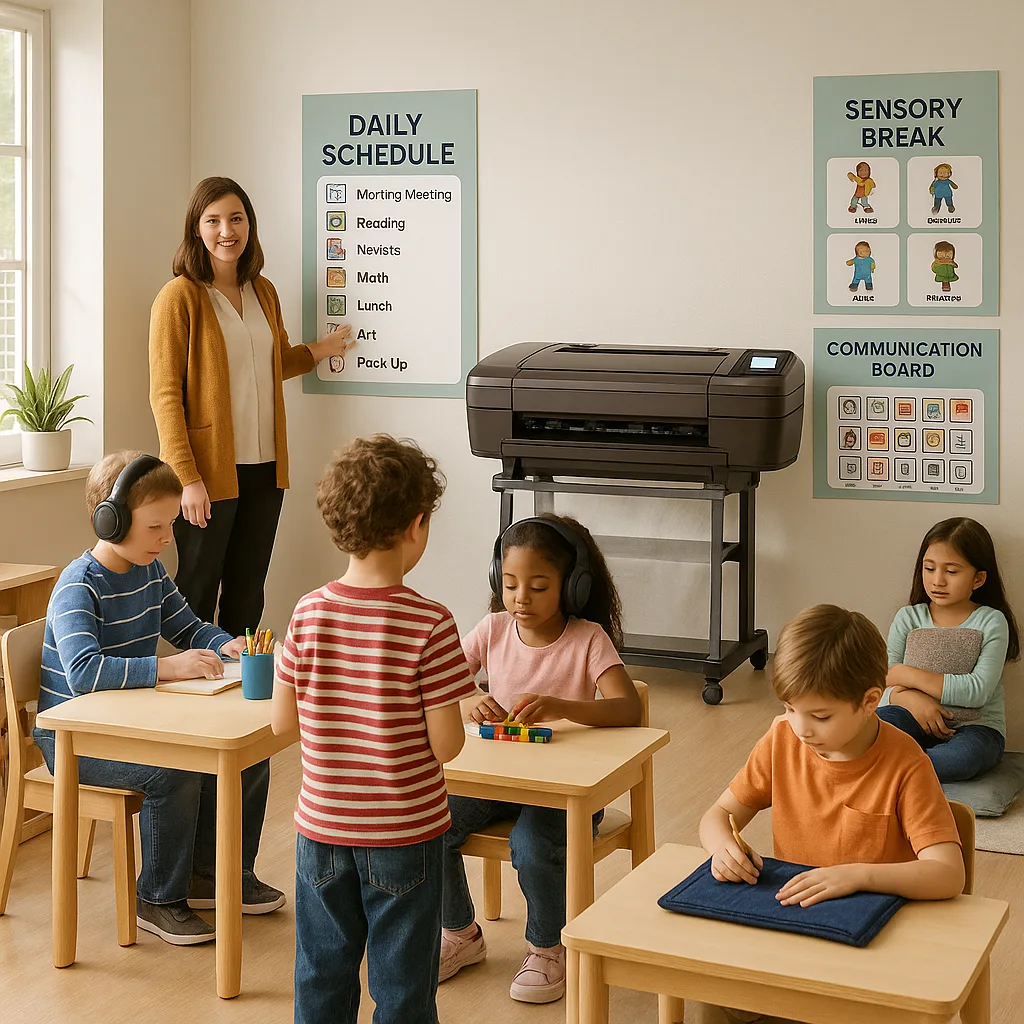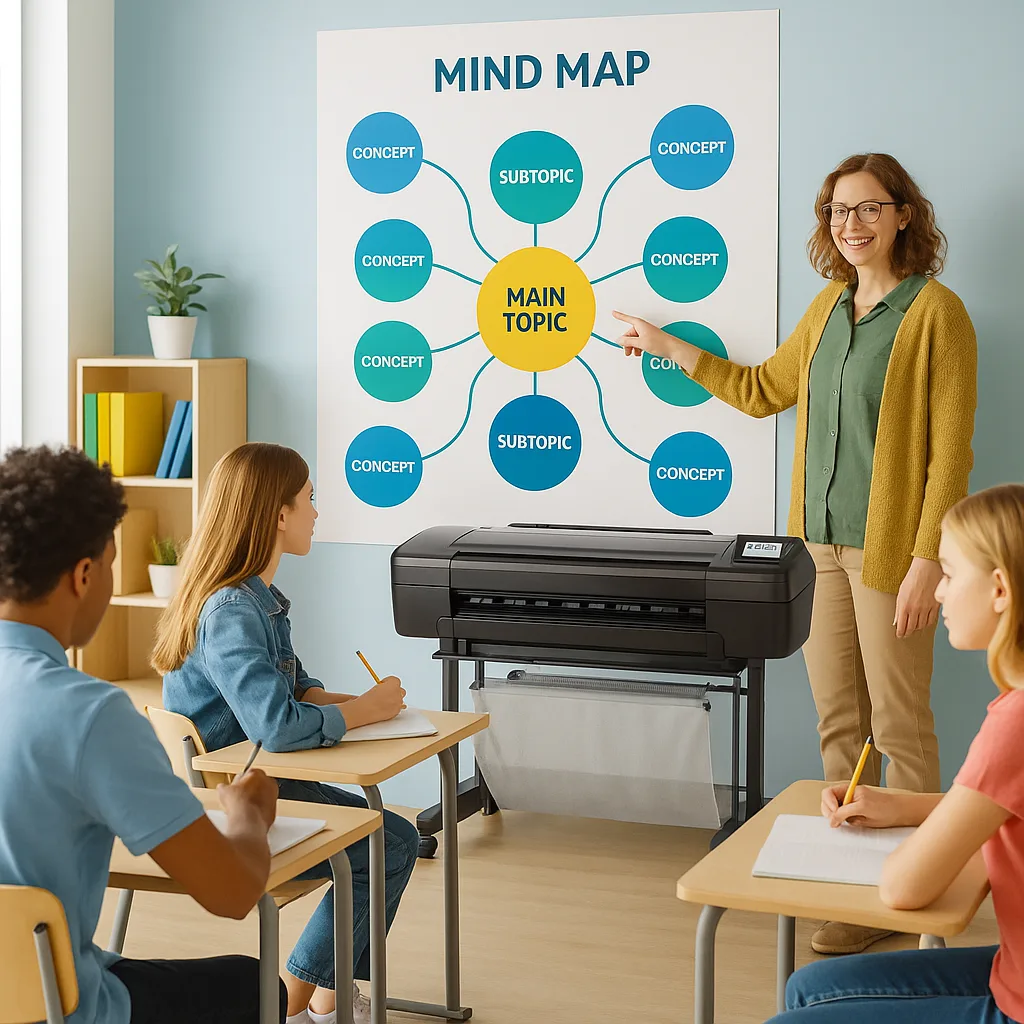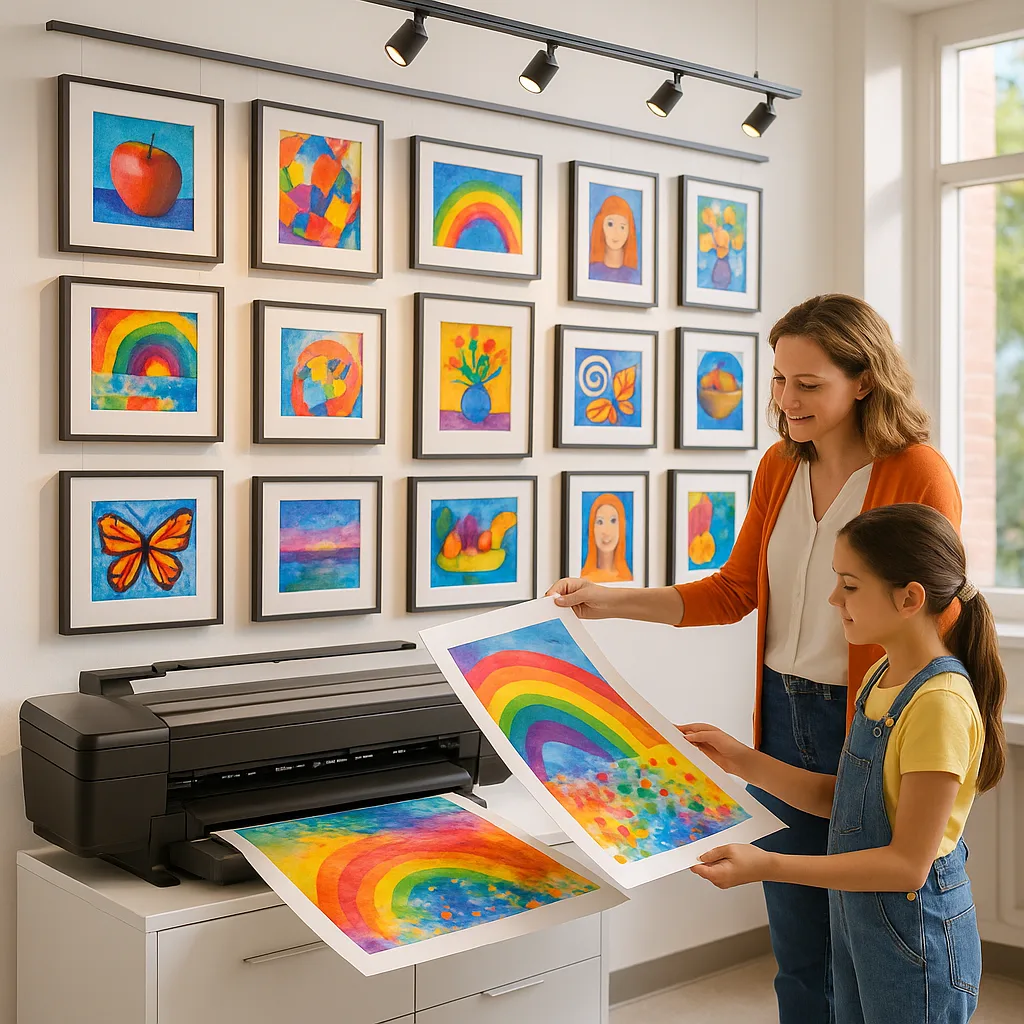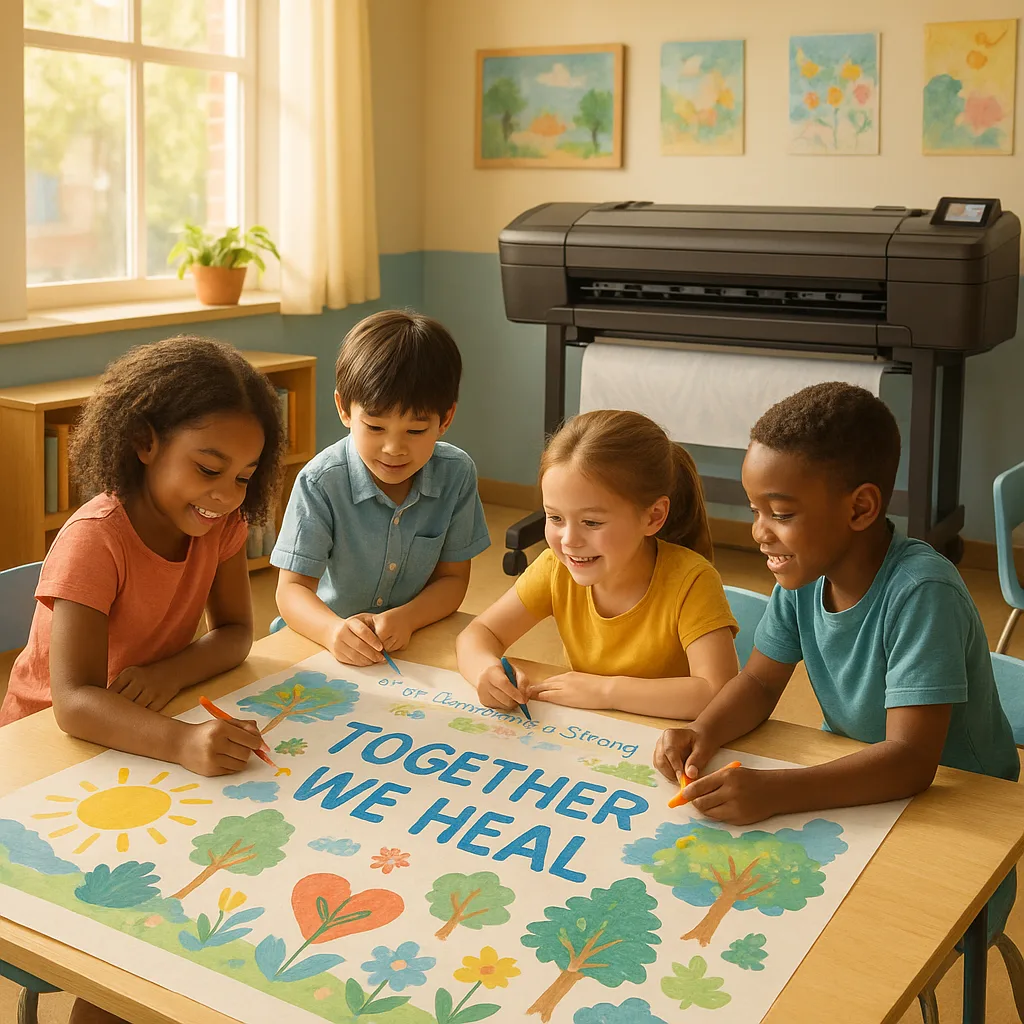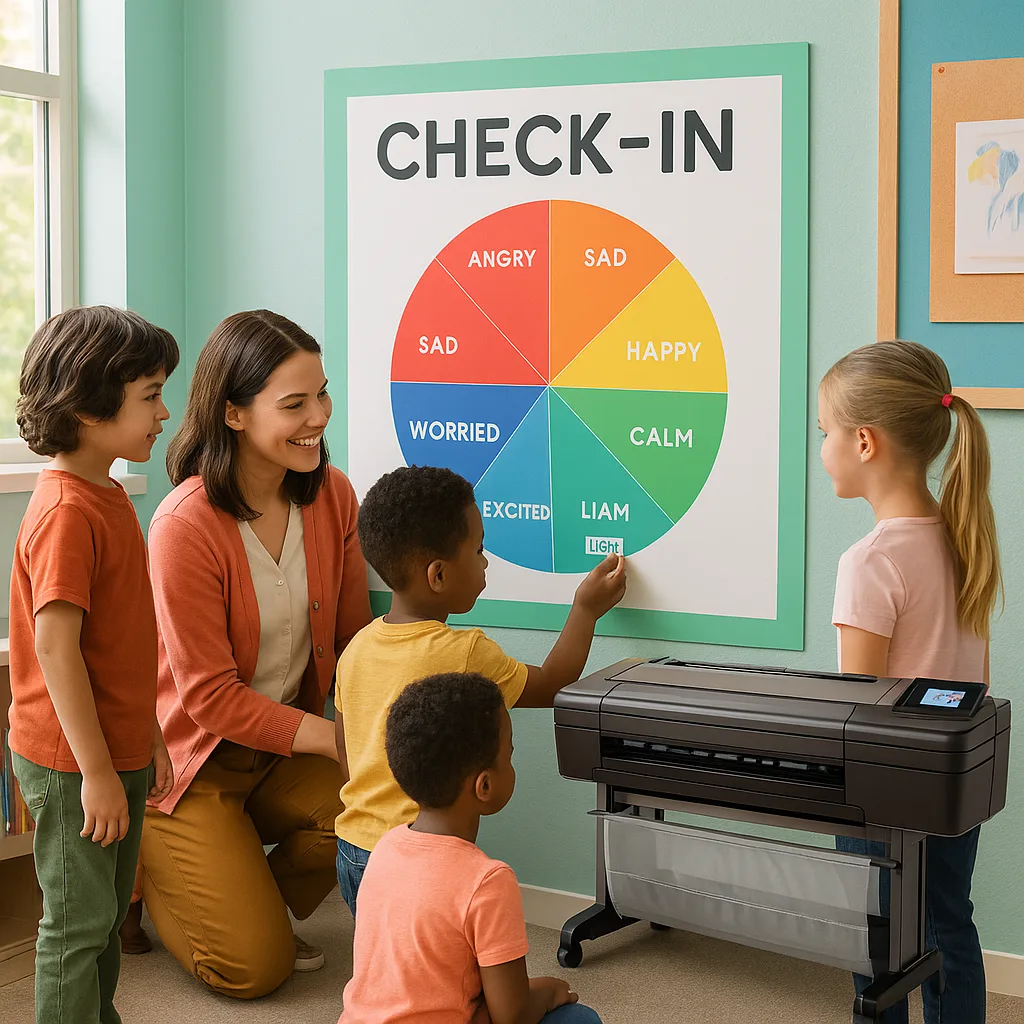
Picture this: another stack of SEL worksheets sitting on your desk, waiting to be copied, distributed, completed (maybe), and then… tossed. If you’re nodding along, you’re not alone. After spending countless mornings watching kids halfheartedly circle emotions on paper before crumpling them into backpacks, I knew there had to be a better way. That’s when I discovered how a poster maker for schools SEL activities could transform those single-use worksheets into vibrant, interactive wall displays that students actually use—and reuse—every single day.
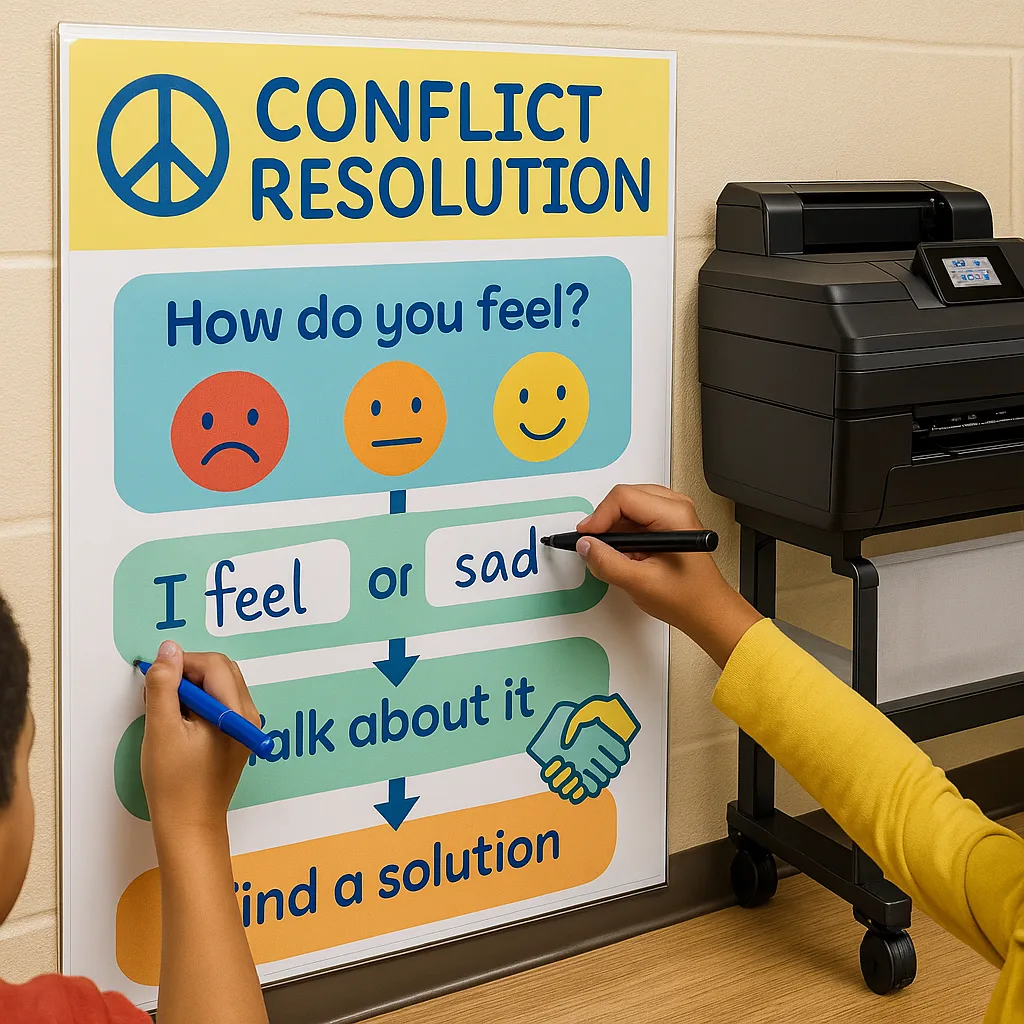
Why Traditional SEL Worksheets Fall Short
Let me share what happened last Tuesday during our morning meeting. Sarah, usually my most engaged student, barely glanced at her feelings worksheet before checking “happy” and shoving it aside. Meanwhile, I could see tears welling in her eyes—clearly something was wrong. This disconnect between paper exercises and real emotional processing happens daily in classrooms everywhere.
Research from CASEL shows that effective SEL requires consistent, visible practice—not occasional worksheet completion. Yet we keep photocopying because, well, what else can we do? Traditional worksheets create several challenges:
First, they’re isolating. Students complete them alone at their desks, missing opportunities for peer support and community building. Second, they’re forgettable. Once filed away (or lost), those valuable SEL concepts disappear from daily awareness. Third, they’re static. A worksheet can’t adapt to changing emotions throughout the day or provide immediate visual feedback when students need it most.
Most importantly, worksheets don’t leverage what we know about visual learning and environmental psychology. Studies show that visual cues in the environment significantly impact behavior and emotional regulation. When SEL tools remain visible and interactive, students naturally engage with them more frequently.
Transform Static Worksheets with Your Poster Maker for Schools SEL Activities
Here’s where everything changed for my classroom. Instead of printing 25 copies of an emotion wheel worksheet, I used our Education Express 24″ Poster Maker Package A to create one giant, laminated emotion check-in station. Now, every morning, students place their name magnets on how they’re feeling—and they can move them throughout the day as emotions shift.
The transformation was immediate. Students who previously rushed through worksheets now pause thoughtfully at our emotion wall. They notice when classmates are struggling and offer support. Best of all? No more copies, no more waste, and the learning tool stays fresh all year.
Calm Corner Tip: Position your SEL displays at student eye level in quiet classroom areas. Research shows that lower placement reduces overstimulation while encouraging independent use during emotional moments.
Essential Interactive SEL Wall Displays
Emotion Check-In Stations That Actually Work
Forget those basic “How are you feeling?” charts. Using a poster printer machine for schools, I created a multi-layered emotion station featuring:
– A color-coded emotion wheel with 32 specific feelings (not just happy/sad/mad)
– Velcro strips for student name tags they can move throughout the day
– QR codes linking to calming strategies for each emotion zone
– Visual coping strategies illustrated right on the poster
The magic happens when you laminate these with Coated Poster Paper and add interactive elements. Students can use dry-erase markers to add their own coping strategies or place sticky notes with encouragement for classmates having tough days.
Conflict Resolution Flowcharts
Remember those “I-statement” worksheets that never quite stick? Transform them into a life-sized conflict resolution path on your wall. Here’s what mine includes:
Starting with a “Pause Point” in calming blue, the flowchart guides students through:
– Identifying the problem (with visual examples)
– Choosing resolution strategies (illustrated with real classroom scenarios)
– Practicing I-statements with fill-in-the-blank sections
– Celebrating successful resolutions with a “Peace Corner” endpoint
Pro tip: Create this on Satin Photo Paper for durability without glare, especially important in high-traffic areas where students need clear visibility.
Mindfulness Practice Guides
Static breathing exercises on worksheets? They rarely work when students actually need them. Instead, design vertical mindfulness stations featuring:
– Visual breathing patterns (mountains, waves, figure-8s) that students can trace with their fingers
– Body scan illustrations with removable “tension spots” students can identify
– Gratitude gardens where students add flower petals throughout the week
– Mindful movement sequences illustrated step-by-step
These work brilliantly when printed large enough for small groups to use together, building that community support element missing from individual worksheets.
Design Tips for Maximum Engagement
Creating effective SEL wall displays requires thoughtful design choices. Through trial and error (and lots of student feedback), here’s what works:
Color Psychology Matters: Use cool blues and greens for calming areas, warm yellows for energy and creativity zones. Avoid overwhelming red except for small attention-grabbing elements. The 5 Year Next Business Day Warranty means you can experiment with colors without worrying about replacement costs.
Height and Accessibility: Mount displays between 36-48 inches from the floor for elementary students. Include both standing and seated interaction points to accommodate all abilities.
Texture and Tactility: Add velcro strips, magnetic backing, or clear pockets for interactive elements. Students learn better when they can physically manipulate the display.
Clear Visual Hierarchy: Use larger fonts for main concepts (minimum 72pt for titles) and consistent iconography throughout. This is where the Lifetime Design Service becomes invaluable—professional designers understand educational visual hierarchy.
Implementation Strategies
Rolling out interactive SEL displays requires planning to ensure student buy-in:
Week 1: Introduction and Co-Creation
Instead of unveiling completed displays, involve students in the creation process. Print the basic framework and let students add elements. This ownership dramatically increases usage.
Week 2-3: Modeling and Practice
Explicitly teach how to use each display during morning meetings. Role-play scenarios and celebrate students who use the tools independently.
Week 4+: Maintenance and Evolution
Keep displays fresh by adding student-suggested elements monthly. Rotate interactive pieces and document growth through photos of the evolving displays.
Ready to Transform Your SEL Program?
See how easy it is to create interactive displays with our Demo Video or watch a real teacher’s success story!
Measuring Impact and Adjusting
Unlike worksheets that disappear into folders, wall displays provide visible evidence of SEL growth. Here’s how to track effectiveness:
Engagement Metrics: Place simple tally marks near displays to track usage. Students love being “display monitors” who record interactions.
Behavioral Observations: Document changes in conflict resolution speed, emotional vocabulary usage, and self-regulation instances. My class showed a 40% decrease in peer conflicts within six weeks of implementing our resolution flowchart.
Student Feedback: Monthly check-ins reveal which displays need refreshing. Kids are remarkably honest about what helps versus what’s “just decoration.”
Photo Documentation: Weekly photos show how displays evolve with student input, creating a powerful visual narrative of classroom growth.
Budget-Friendly Benefits
Let’s talk numbers because I know budgets are tight. Traditional SEL curriculum worksheets cost approximately $300-500 annually for copying alone. Add in the hidden costs—teacher time managing papers, storage space, environmental impact—and it climbs higher.
Compare that to creating reusable displays with a poster maker for schools. The cost per print averages just $1.30-1.50 for materials that last all year. Plus, with cost effectiveness built into every package, you’re investing in tools that serve multiple purposes beyond SEL.
One emotion check-in station replaces 180 daily worksheets. One conflict resolution path eliminates weekly handouts. The math is simple, but the impact is profound.
Getting Started Today
You don’t need to transform everything at once. Start with one high-impact display:
1. Choose your biggest SEL challenge (emotion regulation? peer conflicts?)
2. Find a worksheet you currently use repeatedly
3. Reimagine it as an interactive wall element
4. Test with a small group before full implementation
5. Iterate based on student feedback
Remember, perfection isn’t the goal—engagement is. My first emotion station was honestly pretty basic, but students used it constantly because it was theirs.
The drag and drop printing from Canva feature makes design accessible even for us non-artistic types. Simply search for SEL templates, customize with your class needs, and print at poster size.
Long-Term Sustainability
These displays aren’t just for this year—they’re investments in your teaching toolkit. Store them rolled in tubes over summer, and they’re ready for next year’s class. Update elements to keep them fresh, but the foundation remains.
Consider creating a school-wide library of SEL displays. What works in first grade can be adapted for fifth. Sharing resources multiplies impact while reducing individual teacher workload.
Partner with your PTA or seek small grants for materials. When administrators see the engagement and behavior improvements, they often find funding for expansion. The FAQ page offers grant-writing tips specifically for poster maker funding.
Your Next Steps with a Poster Maker for Schools SEL Activities
Tomorrow morning, instead of making copies, imagine students eagerly checking in with their emotions on a vibrant wall display. Picture them independently navigating conflicts using visual guides they helped create. Envision a classroom where SEL concepts remain visible, accessible, and actively used throughout every single day.
This transformation doesn’t require a complete curriculum overhaul or expensive programs. It simply requires seeing our walls as active learning partners rather than passive decoration spaces. With the right tools and a little creativity, those stacks of worksheets can become dynamic installations that truly support student growth.
The shift from worksheet to wall display changed everything in my classroom. Students who previously avoided SEL activities now lead peers through breathing exercises at our mindfulness station. Parents comment on increased emotional vocabulary at home. Most importantly, I spend less time managing papers and more time supporting actual social-emotional development.
Industry leading support from US based agents means you’re never alone in this journey. Whether you need design help, technical support, or just encouragement to try something new, real humans are ready to help at 866-788-7900.
Your students deserve SEL tools that work as hard as they do. Those worksheets served their purpose, but it’s time to break the cycle. Transform your classroom walls into interactive learning laboratories where social-emotional skills develop naturally, visibly, and joyfully every single day.
Download My Week-One Survival Kit
Get started with ready-to-print SEL wall display templates and implementation guides!

